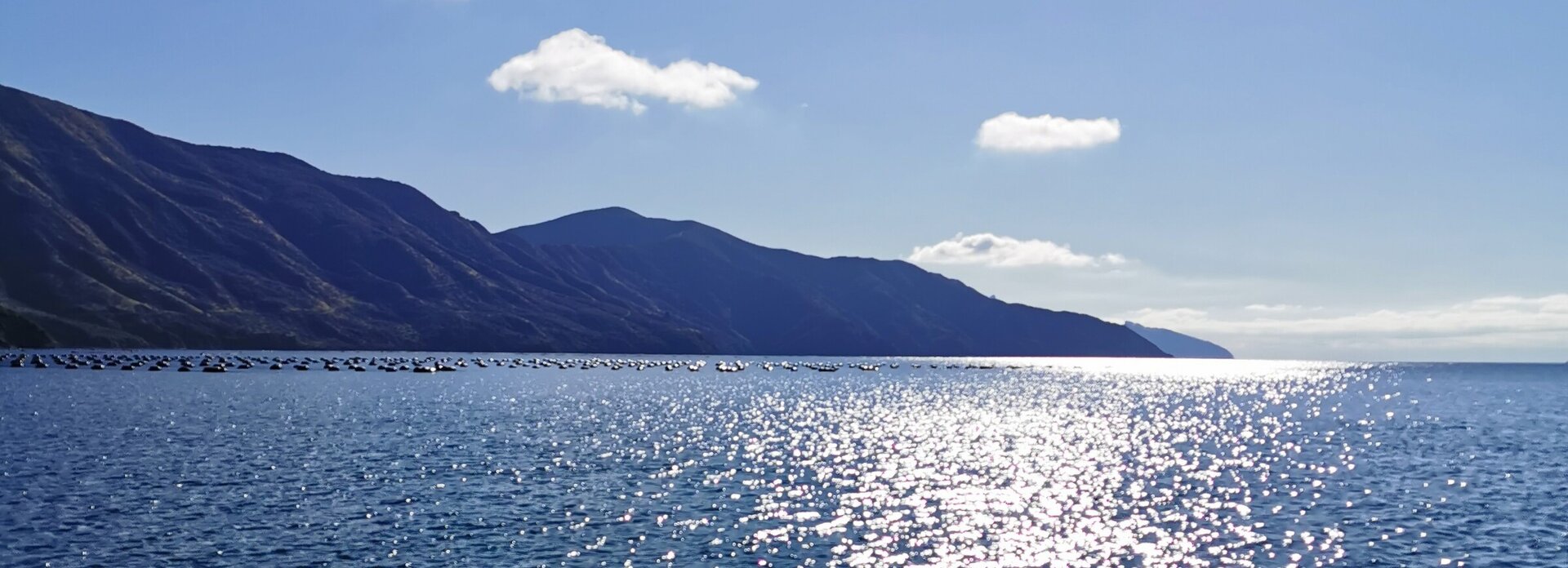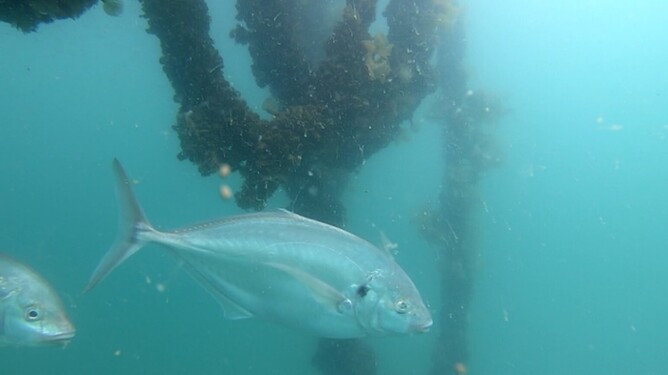Trevally sighted feeding in a Coromandel mussel farm using remote underwater video recording.
There is growing international interest in the ecological benefits of aquaculture, and how those benefits can be increased through improved farming practices. In New Zealand, relatively little is known about the ecological benefits from aquaculture, with NIWA recently completing an initial review for the Marine Farming Association (www.marinefarming.co.nz/healthy-coastal-ecosystems/).
Greenshell™ farms provide significant three-dimensional structure in the water column, effectively forming artificial habitats that have the potential to directly support fish populations. Additionally, the presence of seaweeds growing naturally off the lines, or cultured within a mussel farm, can increase the habitat function, potentially mimicking natural rocky reef habitats. However, there is little understanding of how fish use mussel farm habitat and whether farms are important for critical stages of their life history, such as larval settlement and recruitment.
Researchers at the University of Auckland have begun investigating the importance of mussel farm habitat to fish, using support from The Nature Conservancy, Gold Ridge Marine Farms, and others. An initial study in the Coromandel Harbour has compared the arrival of larval fish into a mussel farm with a high amount of kelp, a mussel farm without kelp, and adjacent natural rocky reef and sandy habitats. The different habitats were sampled over the summer when many fish are breeding using standardised collectors of fish recruits.
A major finding is that a diverse group of small fish species are recruiting into mussel farms, including leatherjackets, spotties, triplefins, bastard red cod, and clingfish. The total number of fish recruits sampled at the mussel farm sites (371) was higher than for the 354 in the natural habitats combined. Interestingly the mix of fish species arriving into the mussel farm habitats was quite similar to the natural reef sites.
The study will also investigate how fish use mussel farm habitat, whether they are feeding on food resources provided by the farm and its associated biofouling, or whether they are just capturing food material passing through the farm, that is either swimming through or drifting through the farm on currents. This will be done using analyses of fish gut contents and chemical analyses of fish tissues which can help to identify their predominant sources of food. To identify what species of fish are living in mussel farms, underwater cameras installed on farms and in nearby control areas are being used to observe and count fish. So far, a variety of fish have been observed, not only some of the small fish that are recruiting to the farms in their hundreds, but larger fish such as trevally, leatherjackets, kahawai, spotties, snapper and kingfish (Fig. 1).
It is hoped that the study will shed more light on how fish are using mussel farm habitat and provide some direction on how farmers can manage their farms to maximise the ecological benefits arising from their farming operations in the future.
By Lucy Underwood (lund481@aucklanduni.ac.nz) & Andrew Jeffs, University of Auckland.

